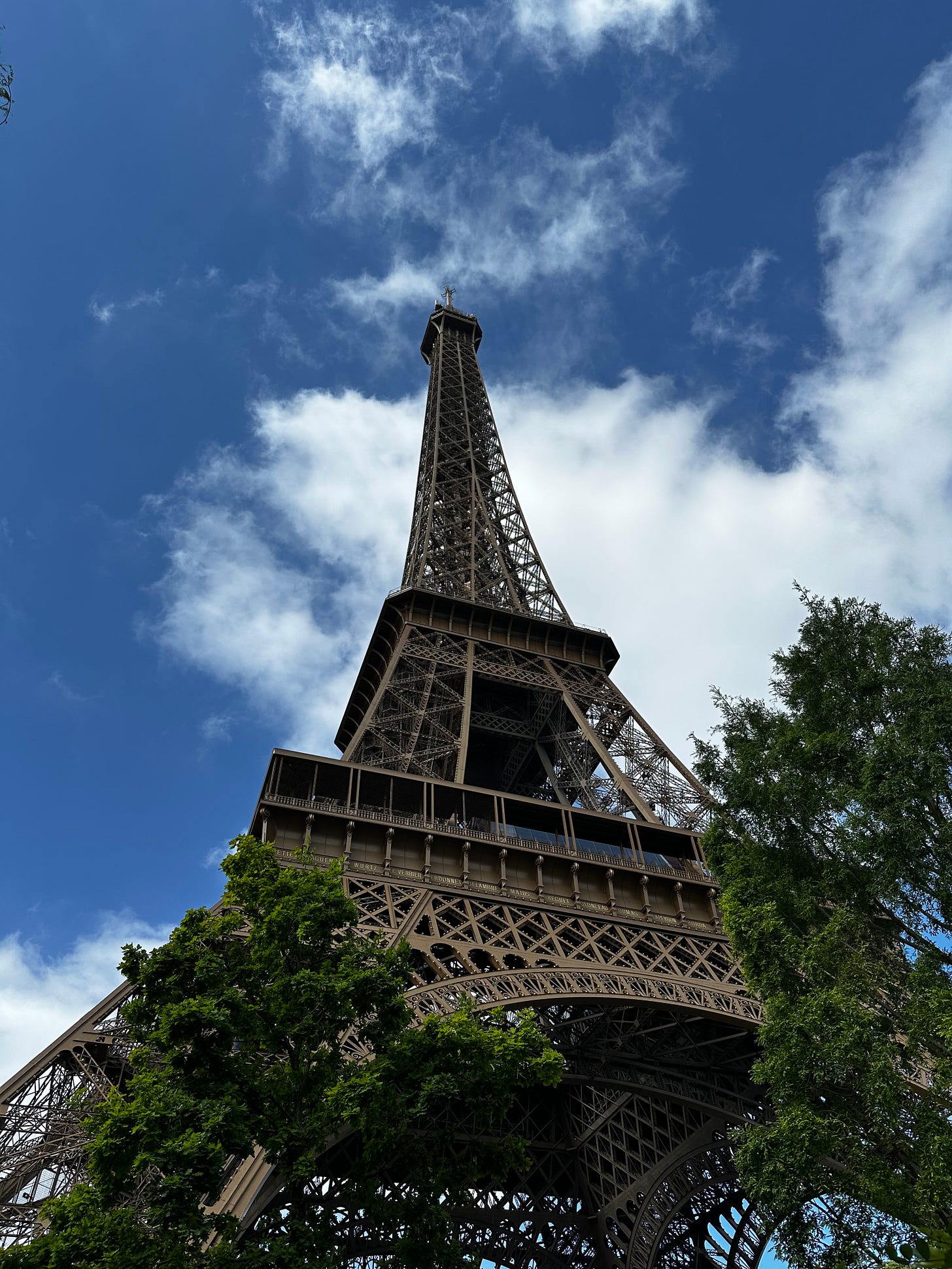After two weeks in Paris, I am back and have so much to report to you. Perhaps I should rephrase that. I need to recount my experiences in Paris because I do not want to forget. I experienced so much being there that I need to record it somehow, not just in drawings and watercolor, but also in writing. Be forewarned, this will be a long post and the email will clip it. If you want to read the entire post, please continue reading on the site or the app.
Paris’ architecture and its surroundings are like no other. I had been there before but this time it hit me different. It might as well had been my first time experiencing the city. European cities are meant to be taken in, slowly. By that I mean that people, even when they are walking fast, are experiencing the city daily because they walk. Our guide in Italy, Luca, did not have a driver’s license. Our guides in Paris did not have one either. They simply walk, take the metro, take the bus, take the train, or take a cab. When I say they walk, I do not mean, from a corner to another corner. I mean, miles. Lots of them. In that way, one gets to know the city, its streets, its shops, and its personality. Since I got back, I have missed walking around as way of transportation rather than as a way of exercising.
Still, there are places I did not see or visited. Which, I would love to visit. The museums and galleries are large. Thus, the amount of work at either, at least the ones we visited, are quite numerous. Sometimes overwhelmingly so.
The first day in Paris, we visited the Le Bal Center. Le Bal has a very interesting history. In the 20s’ it was a place of drinking and dancing. Then, it became a betting place which after 1992, was pretty much abandoned. The city bought it 2006 and since then it operates as a place to support contemporary mixed media art such as film, photography, and design. It aims to expose and confront its viewers with differing points of view. The show ON MASS HYSTERIA : A HISTORY OF MISOGYNY, which ended right after we visited, was a historical visual record of how females have been treated since the 15th century to the present. It meticulously recorded the phenomenon of hysteria among females. The show was sobering and poignant. There was dialogue, photos, video, posters, and three rooms in which there were case studies. Each room was a detailed case study with the brain scans of the woman speaking on the audio. The gallery was dark. Its walls were painted all black. And hanging on the walls of the room, there were meticulous photocopies of historical records of female hysteria on clipboards arranged chronologically. It left quite an impression on me. Below are photos of the show.


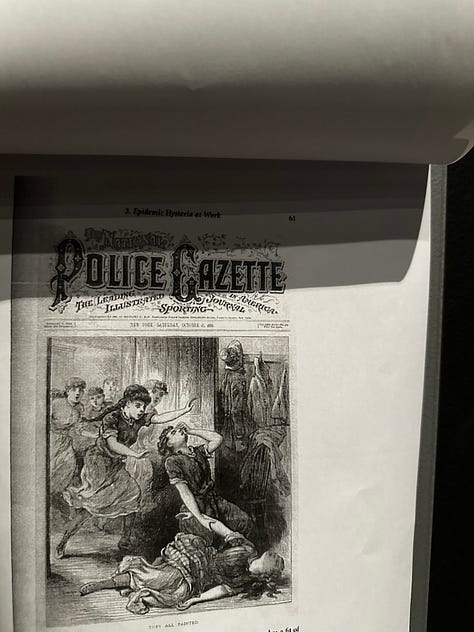
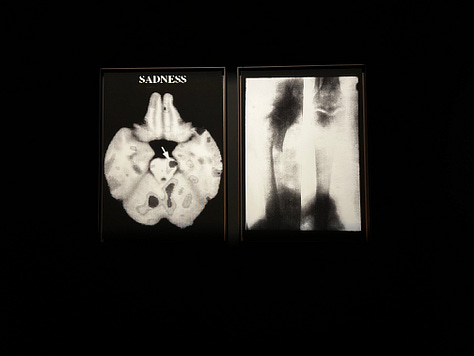
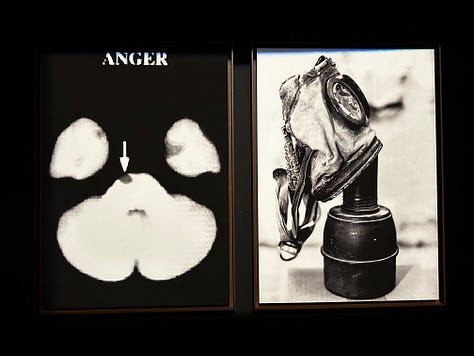

Of course we visited the Eiffel Tower. It was a very cold day and being up on it, got even colder. But the view of the city from the tower was breathtaking.
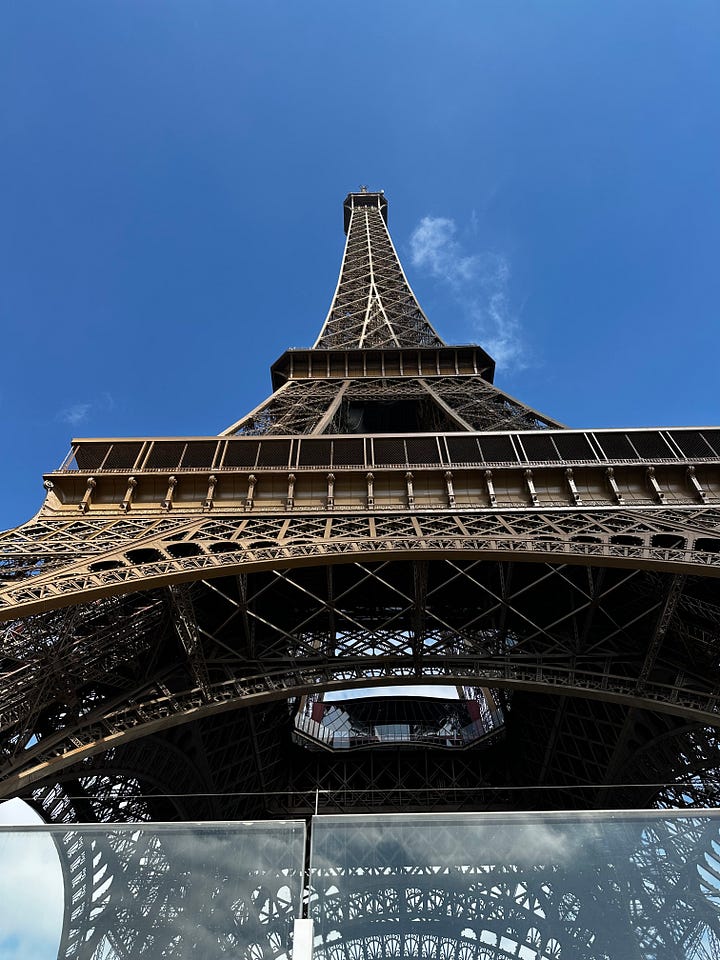
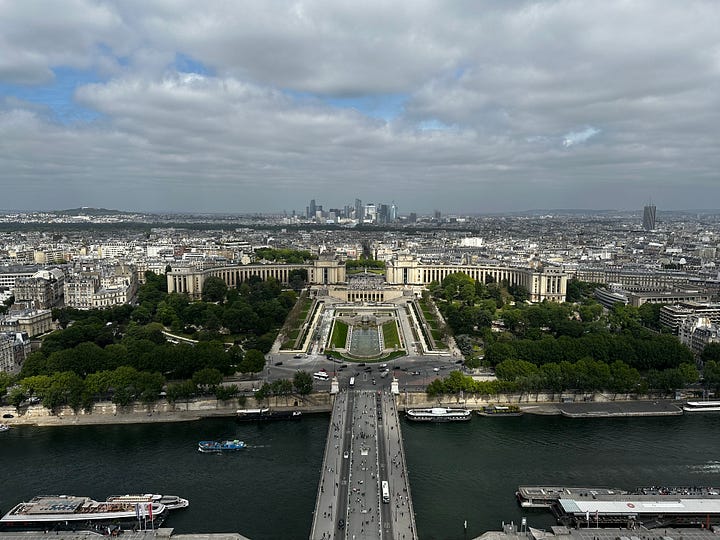

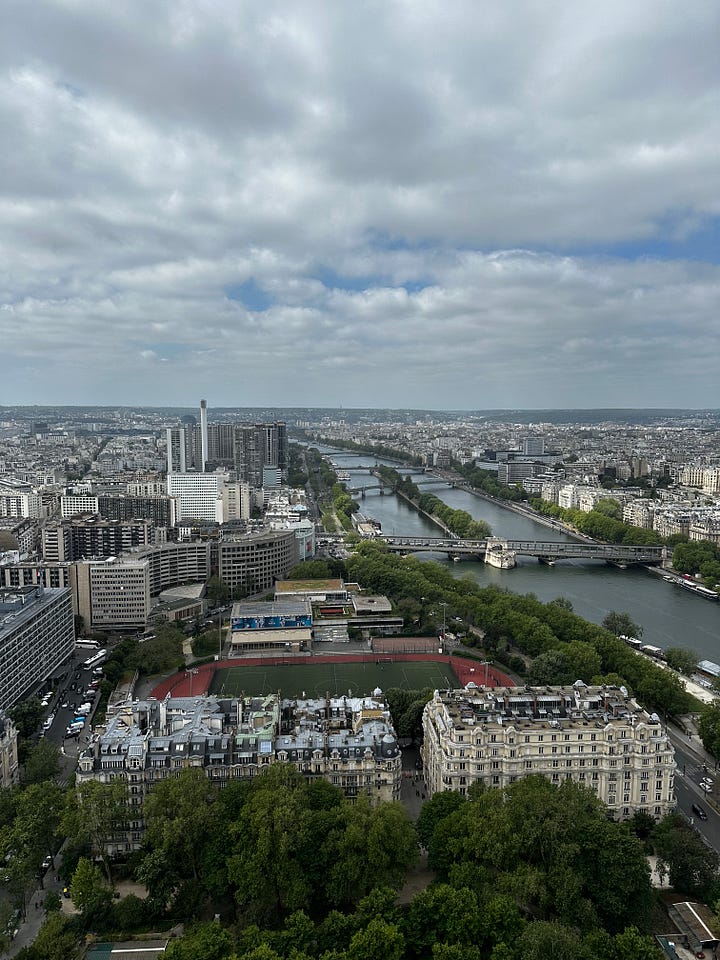
We visited the Fondation Henri Cartier-Bresson which had a show by the photographer Richard Avedon. The exhibition had been commissioned by the Amon Carter Museum of American Art in Fort Worth, Texas to photograph the American West. The photos were impressive both because of the subjects and also because Avedon did not use artificial light. Some photos were a little creepy to say the least. But the subjects were mostly people who are not famous or popular. Rather they are largely disregarded by us. In a way the subjects might be invisible to us. I stared at them in a way I am not allowed by societal standards. I looked at their faces, the wrinkles, the folds, and their stances. Some of them seemed to have had a hard life. One photo in particular, was both humorous and creepy: the bee keeper. The calm this man has to have to allow himself to have bees resting on his body is beyond my understanding. Nonetheless, he seemed pleased.
We then visited the Maison Européenne de La Photographie. The place was beautiful and there were a couple of shows. The most significant was a retrospective show of the photography of Dennis Miller—Music + Life. His story and how it got started is very interesting. From humble, very humble beginnings to becoming the photographer for Bob Marley and Six Pistols while also recording the British black culture merged with punk and reggae. There was a room with a giant jukebox and my daughter and I danced to the music that was playing. Did I mention that my daughter was with me? Miller had intimate access to these artists’ lives and assisted with art direction as well. His photos show how comfortable his subjects felt with him.
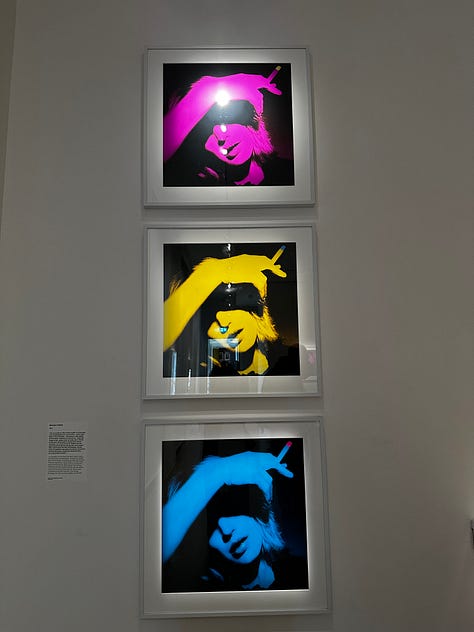


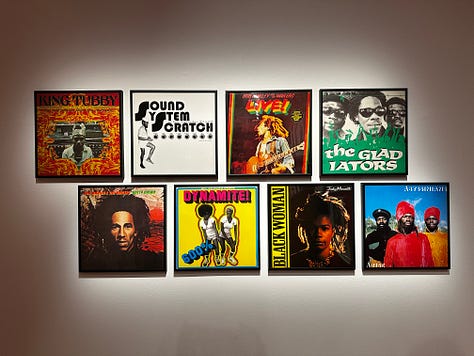
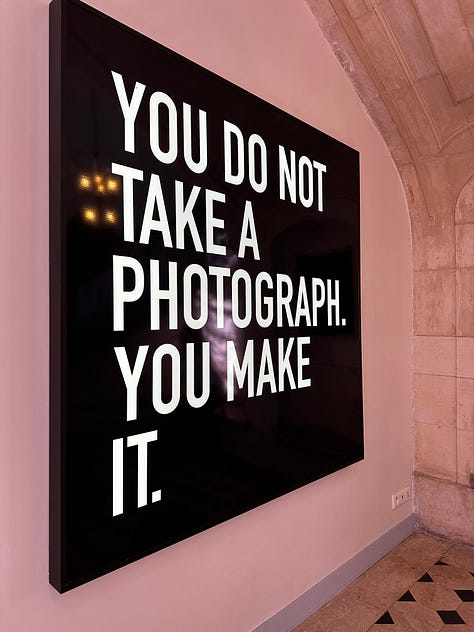

We changed the pace a little and visited the Fondation Le Corbusier. To appreciate this house one must read a little about architecture and Corbusier himself. He was not only an architect but also an artist, furniture designer, and a writer. His work was based on geometry and purity of forms. The house consisted of an open floor plan when that was unknown. Still there were rooms, like the kitchen for example was not visible from the dining room. The rooms were all towards the sides and the center, the main area was open and visible from any story.



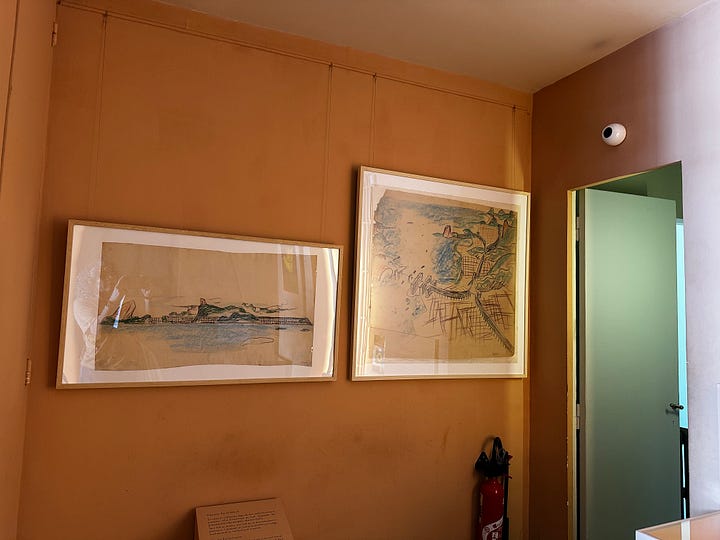
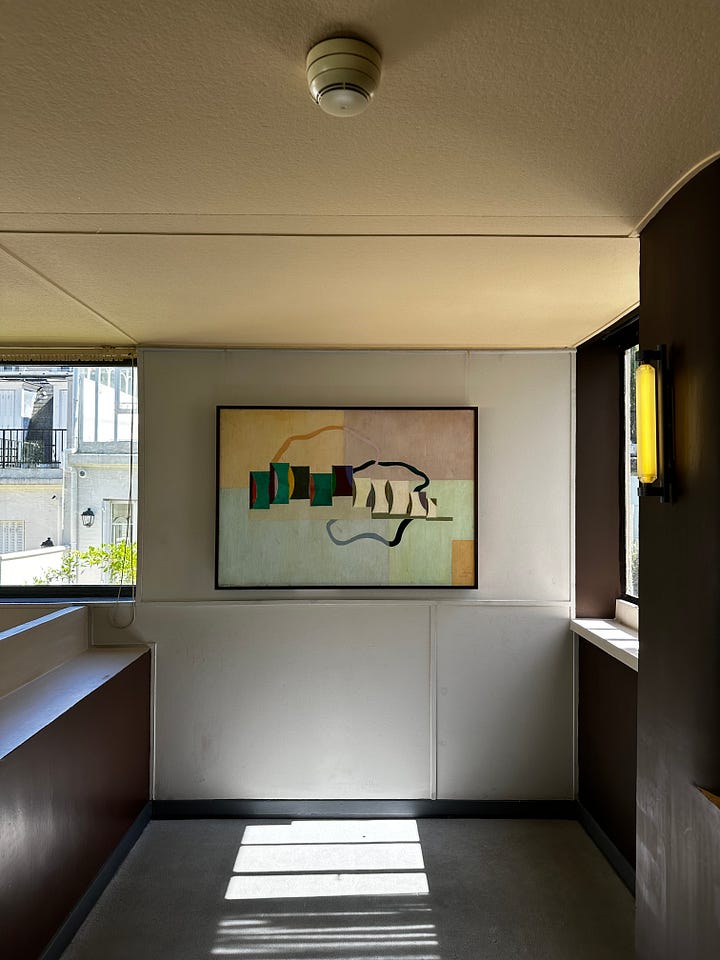
The Musée Des Arts Décoratifs had a surprisingly gorgeous show on the Rococo from Nicolas Pineau to Cindy Sherman. It was beautiful. There was also a show about the work of Jacques-Émile Ruhlmann, designer and decorator. His sketchbooks were on display and I spent a considerable amount of time admiring his work.
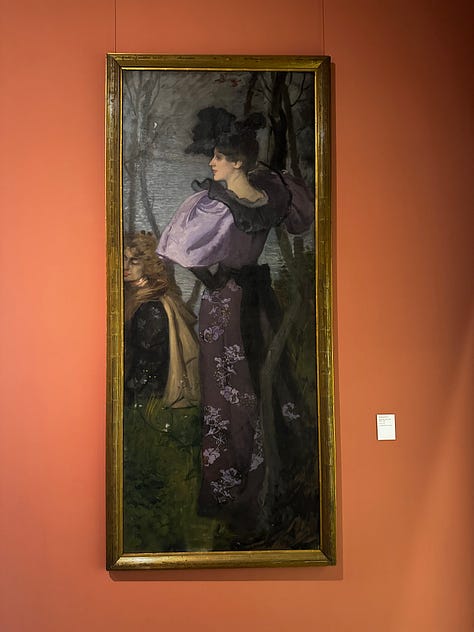
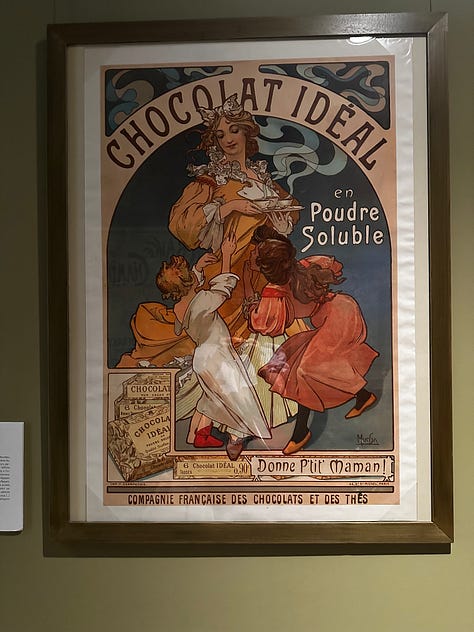

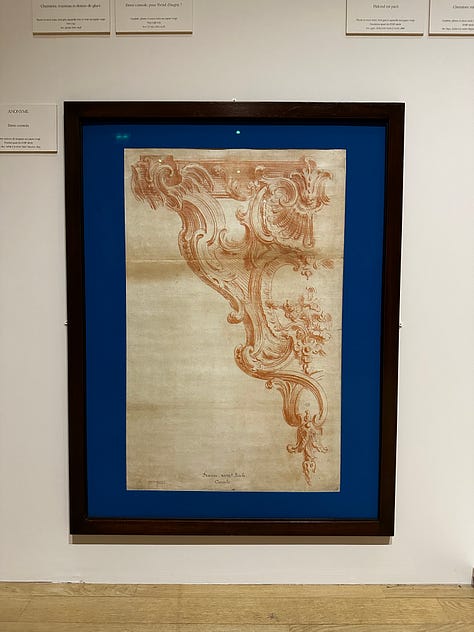
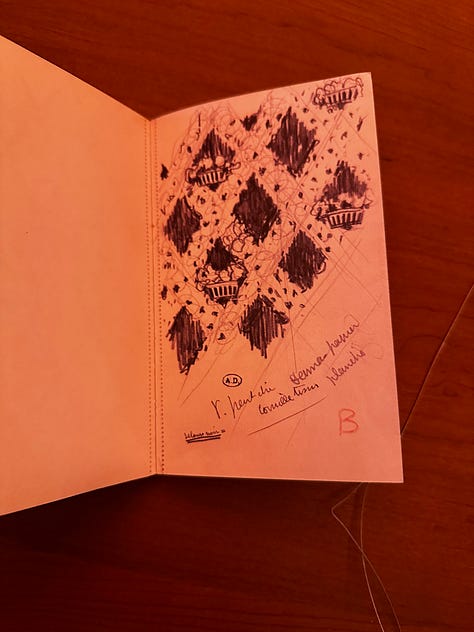
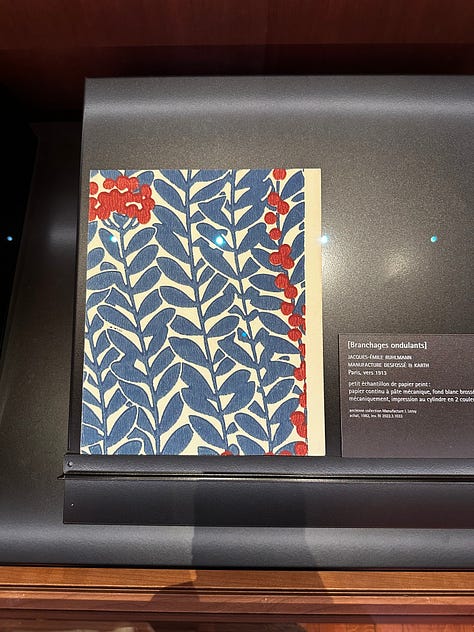
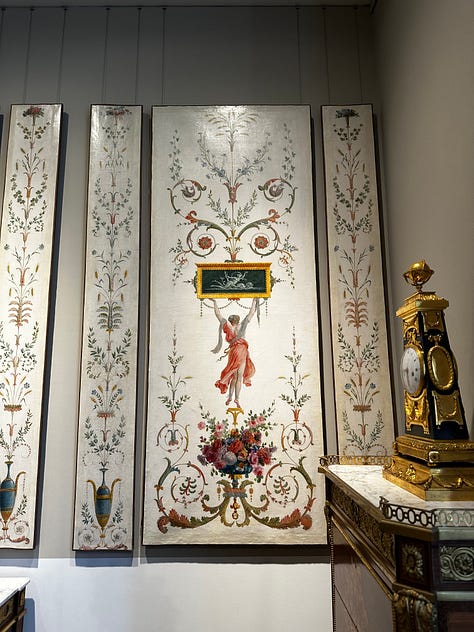

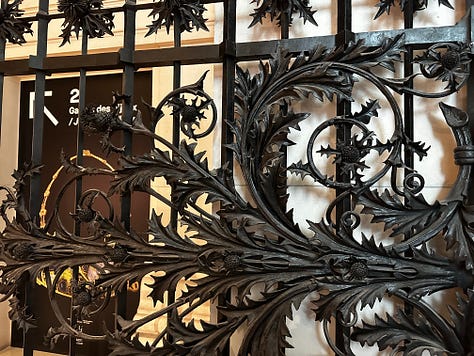
Then, of course we visited the Louvre Museum. I had been there before but it was not as long as this one. The Louvre is, well, an immense and imposing architectural beauty. Some of the artwork I cherish most is there. And no, it is not the Mona Lisa though I managed to take a picture of her. The work I am talking about is the work of Jacques Louis-David; The Death of Marat. I have a soft spot for this artwork as I find it to be very moving. There were other artworks of course but the architecture itself is worthy of looking and get lost in it. As you can see below my photo of the Mona Lisa was from the side. It turns out that the museum decided to control the amount of people gathering around her with a line. So, they place these screens on the side. I was not going to stand in line since I had already seen her, when it was kind of crazy and everyone had to fight the crowds to snap a shot. But I also could not leave without taking another photo. Just like a thief, from the side, sneaking in between people and screens, I took my photo.
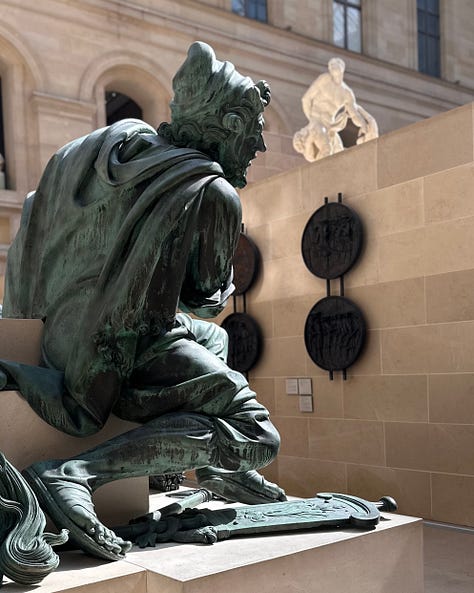
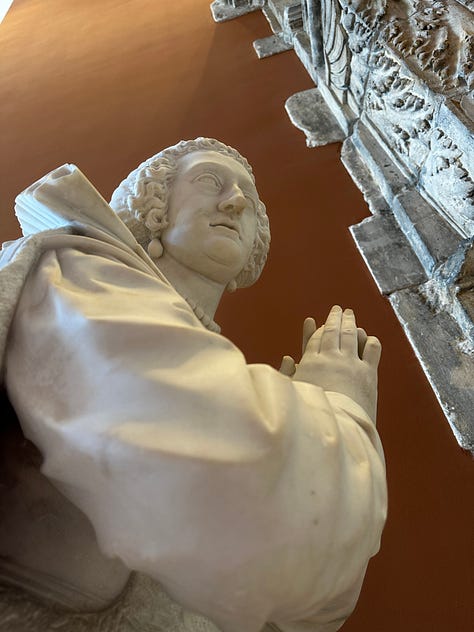
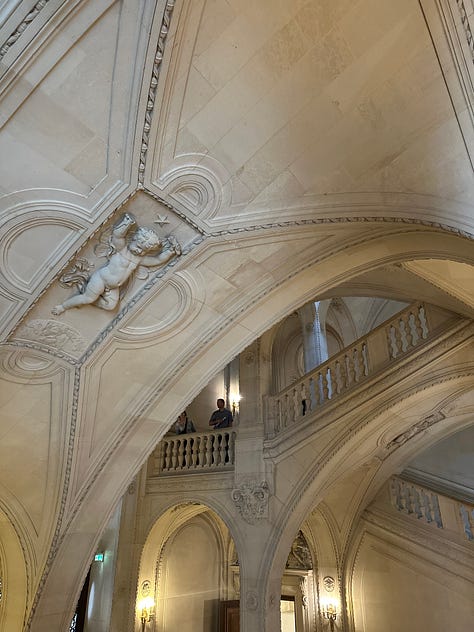
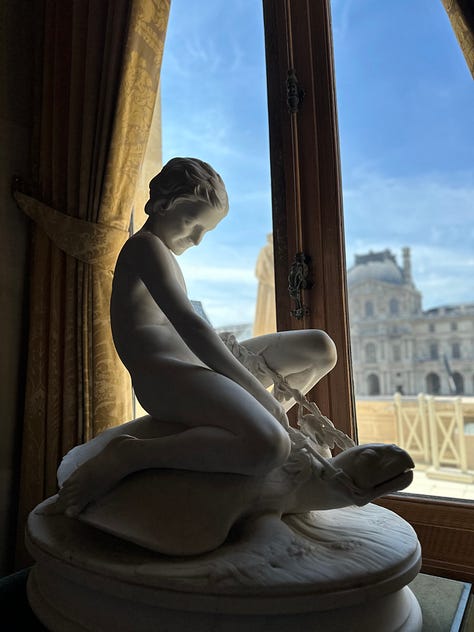

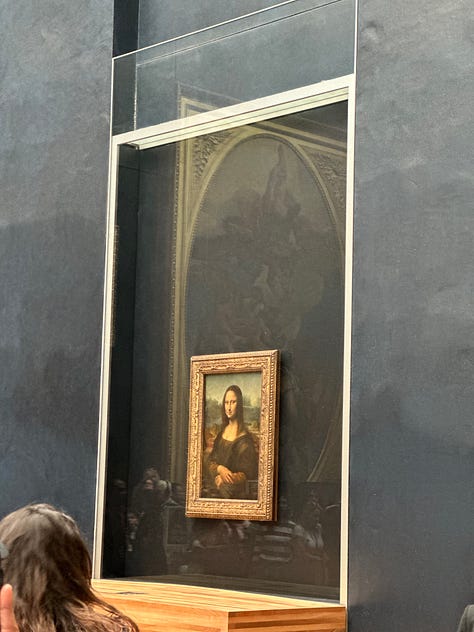
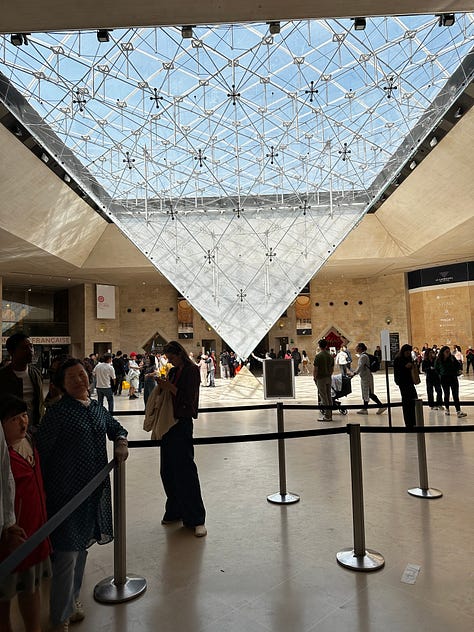

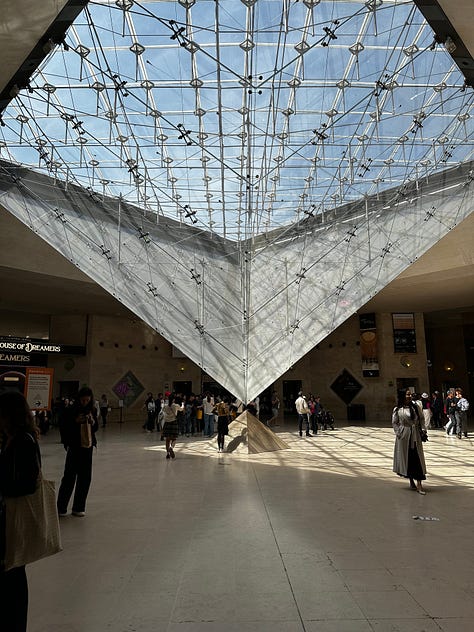
And in the afternoon we went to see Notre-Dame. We had a tour with Dr. Iliana Kasarska, one of experts who assisted and took part in the restoration of the cathedral. It was impressive to hear her talk about the process, the architectural details, and the stories. For instance, the sculpture of the virgin standing under the steeple remained untouched when the steeple collapsed. The church is gorgeous. There was a mass inside so Dr. Kasarska had to speak slowly and softly but she was so sweet and did not mind repeating things over and over.
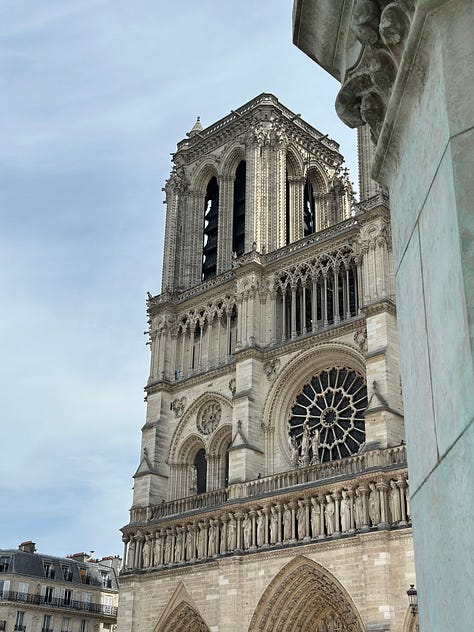


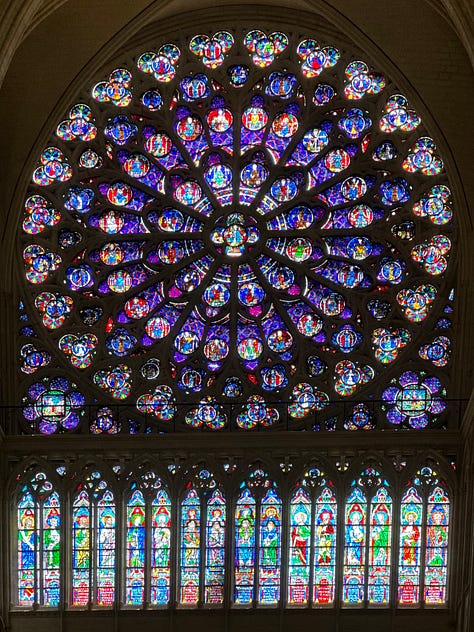
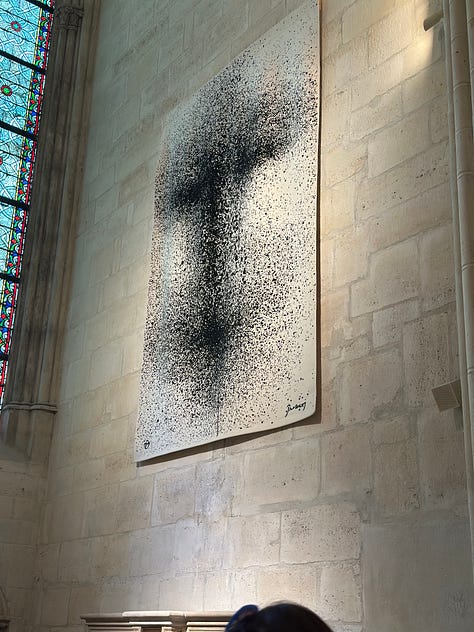
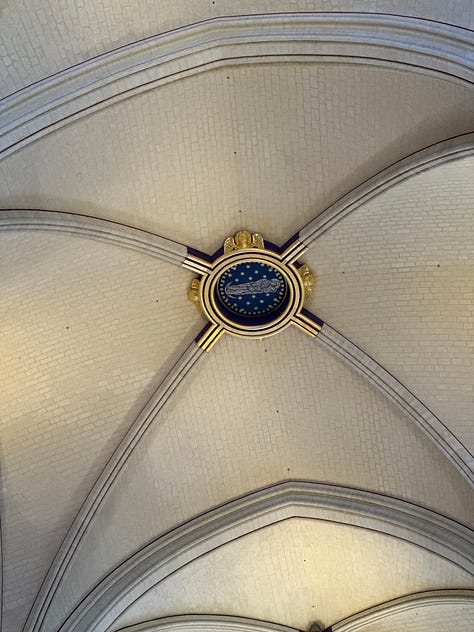
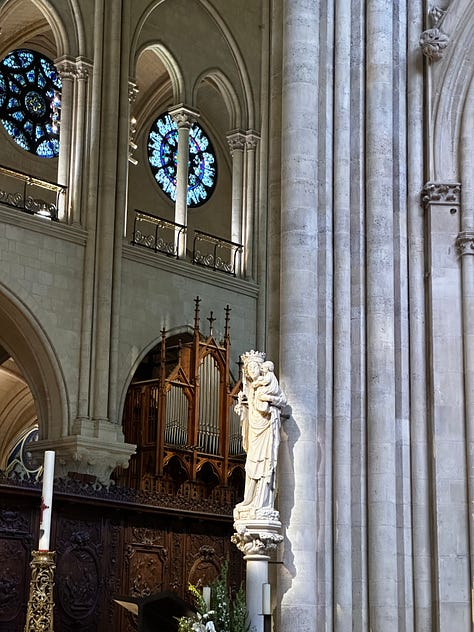

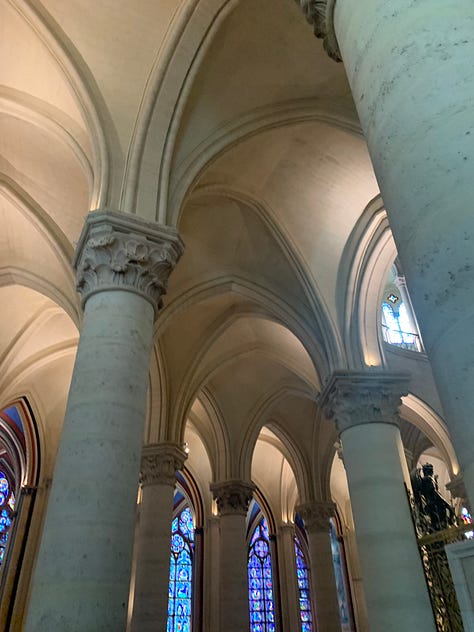
The Palace of Versailles is of course a must see in France. Like the Louvre, I had been there before. This time however, we walked around the gardens and that was impressive. Versailles’ architecture is magnificent and the details on the decor are not to be missed. Though I doubt people stop to look at patterns on the walls as much as I do. The Hall of Mirrors is my favorite place there. I was impressed with the flowers too. I have to take a moment to tell you that in general, the flowers in Paris are stunning and they are everywhere.
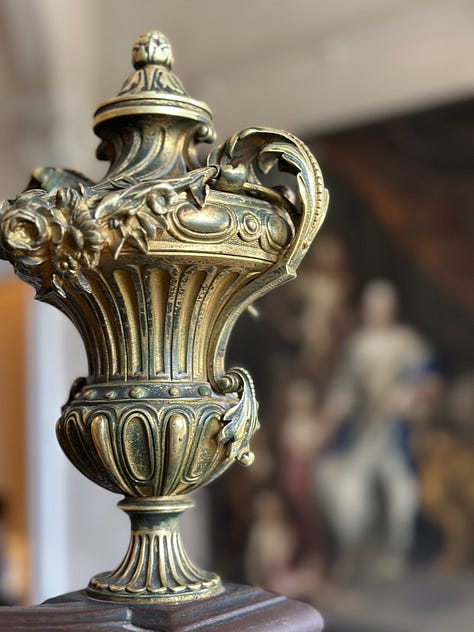
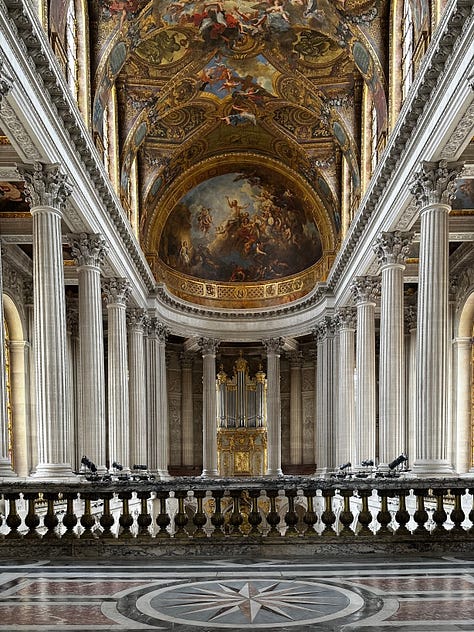
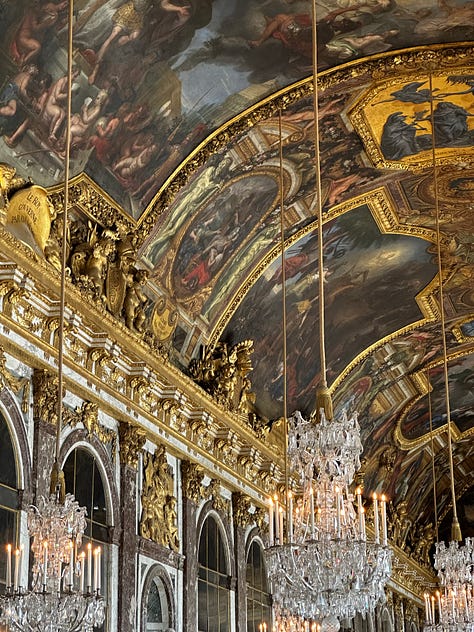
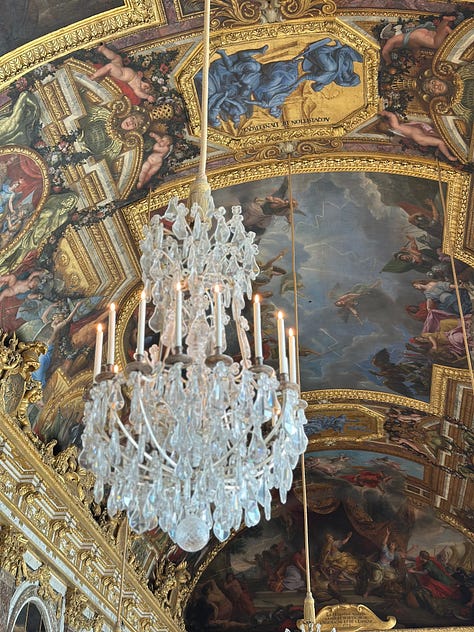

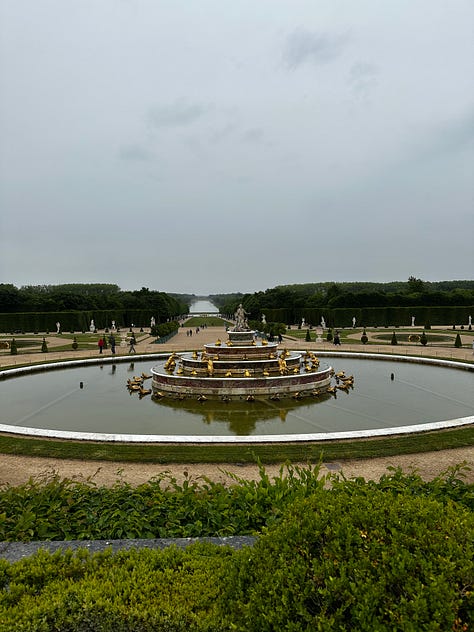
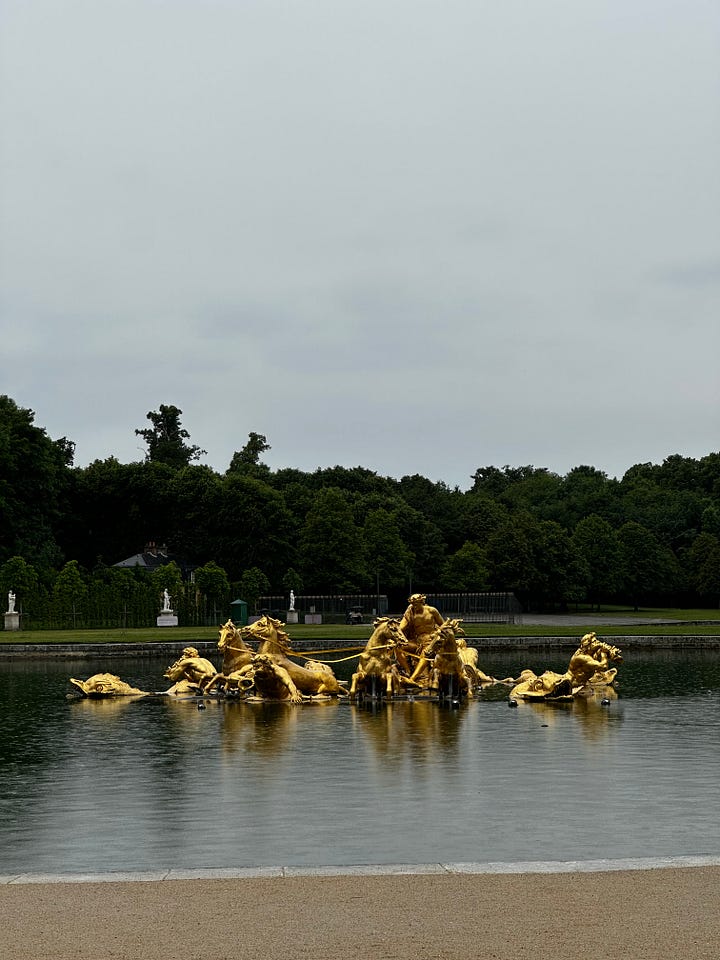
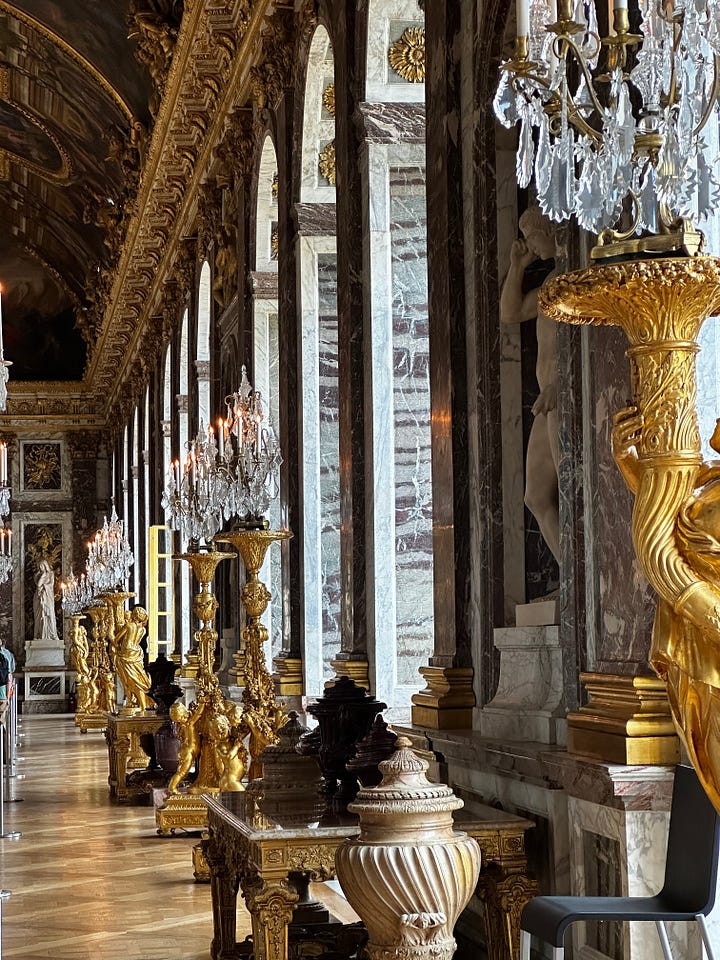
The flowers deserve their own gallery.
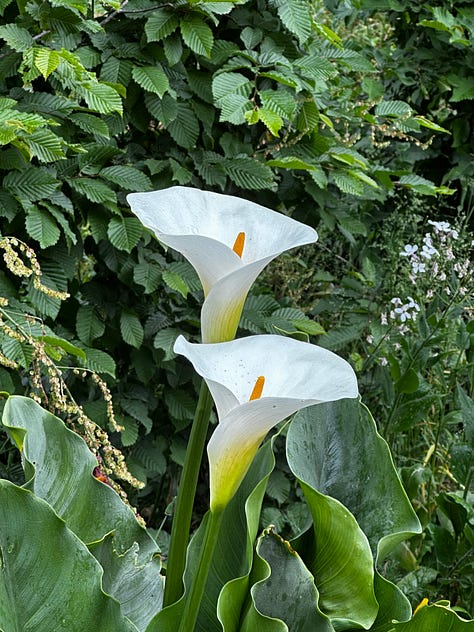

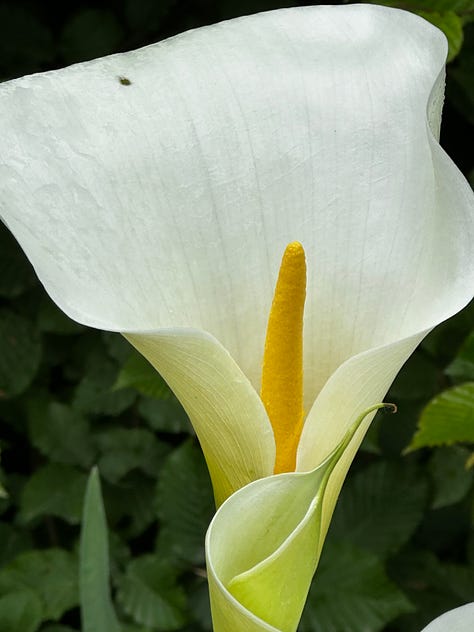


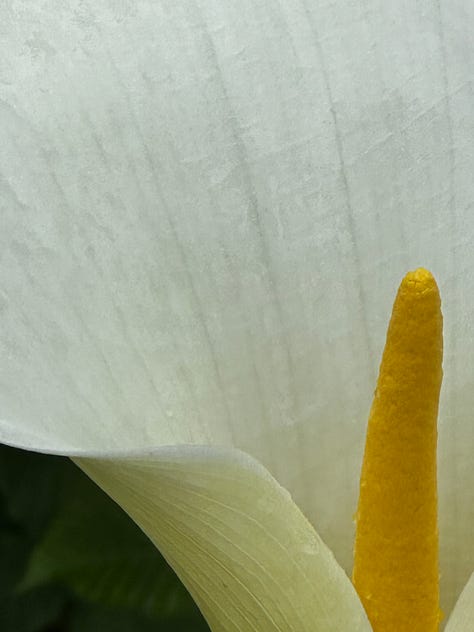

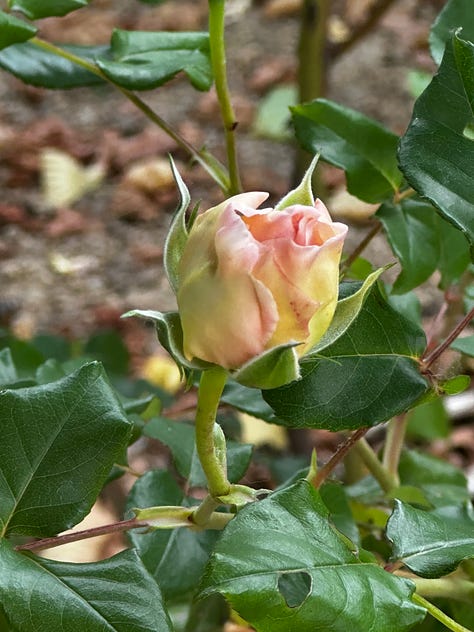

One of my favorite visits was to the Musée d’Art Moderne Paris. The collection is amazing! I even paid extra to see two shows: the Art–Virtual reality/VR-only experience titled Dance Dance Dance—Matisse and Matisse and Marguerite.
Paying for both was well worth it. The virtual reality experience is “a dive into dance and painting, an immersion in the painter's art while witnessing the creation of some of his greatest works, such as The Dance (I) of 1909 (The Museum of Modern Art, New York), Merion's Dance (Barnes Foundation, Philadelphia), The Unfinished Dance and The Dance of Paris (Paris Museum of Modern Art).” The seven euros I paid for it were well worth it. It was only 10 minutes but incredibly impactful. I almost cried to feel like I was in Matisse’s mind and seeing or getting as close as possible to what he might have been thinking when he created this artwork. It also gave me an idea to try for a project I am working on at the moment. The drawback of a virtual experience is that there is nothing to show for it. It is a very personal and individual experience .
The other show, Matisse and Marguerite was very moving as it offered insight into Matisse and his relationship with his daughter until his death.
Another majestic piece was the massive permanent installation of the work of Raoul Dufy titled The Electricity Fairy created in 1937 for the International Exhibition in Paris. It took my breath away. Panoramic picture below.
Other pictures worth showing.

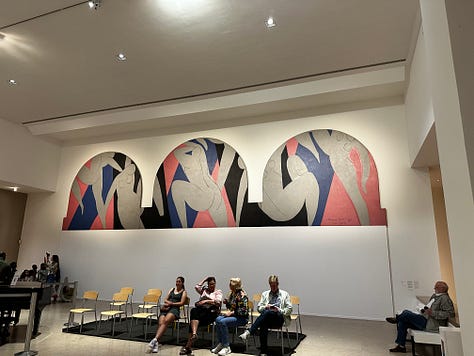
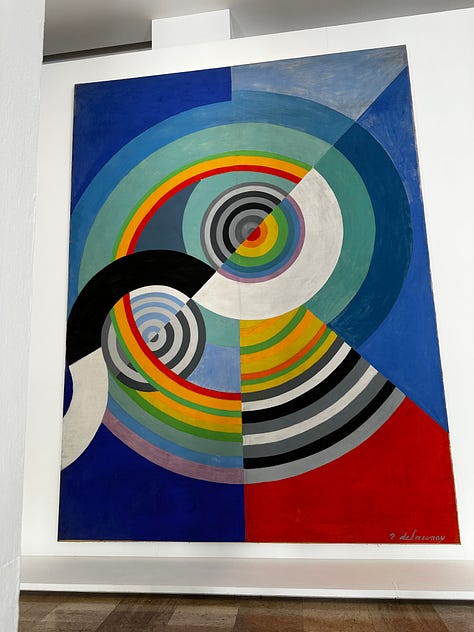
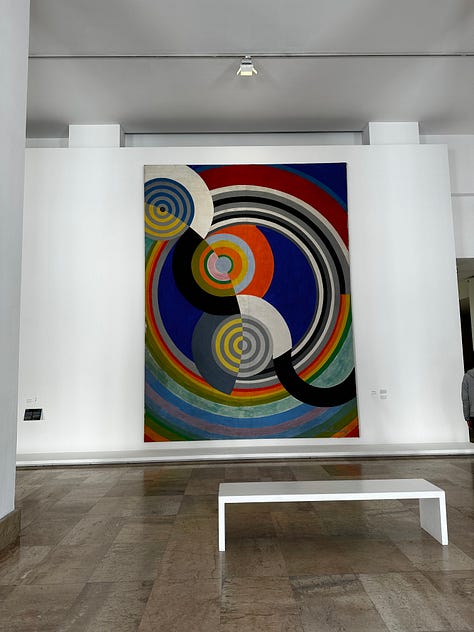
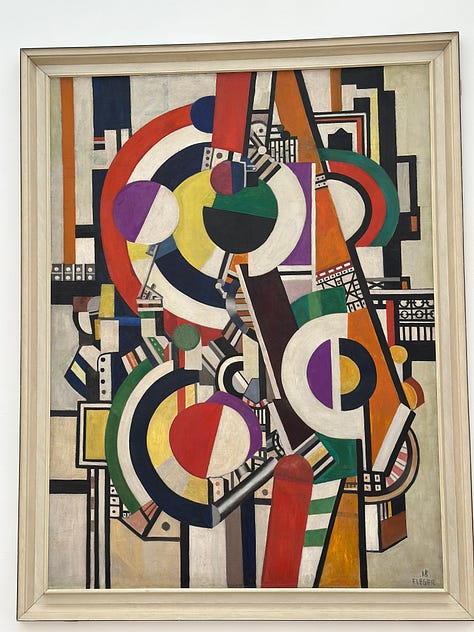
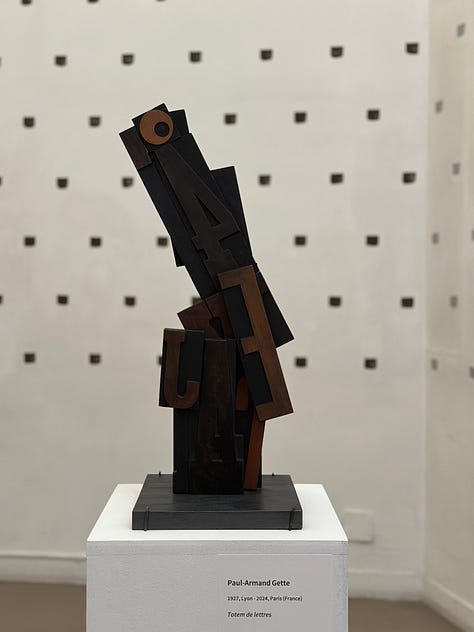



The gardens at Luxembourg were stunning and very pleasant to walk around. It was a cool morning but sunny which made for a very relaxing walk.





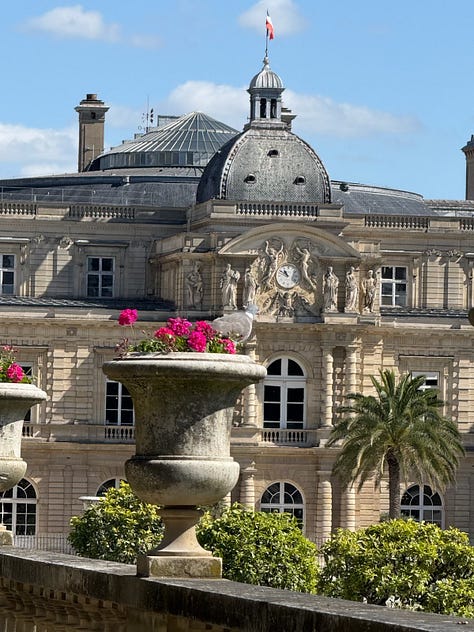
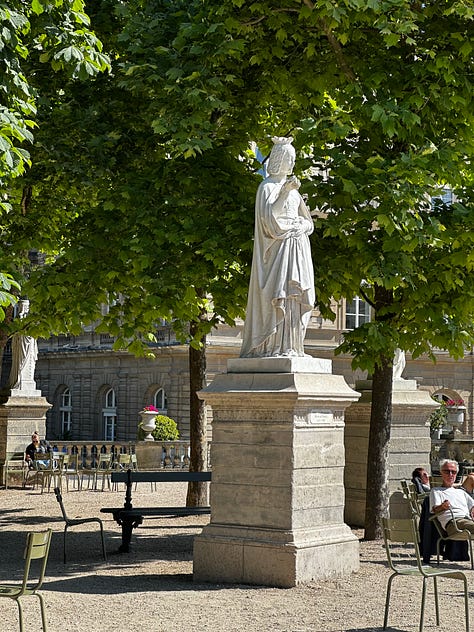
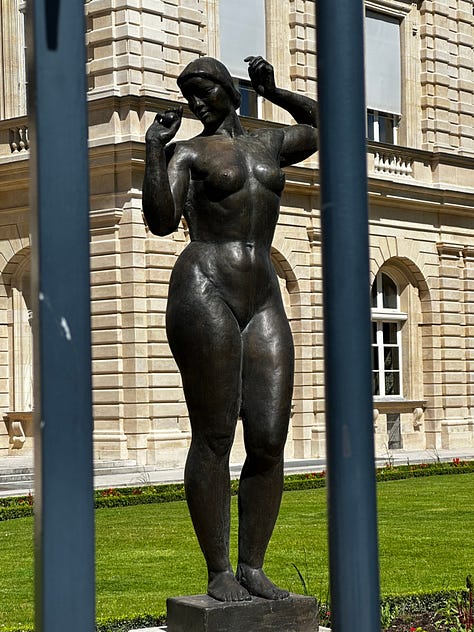
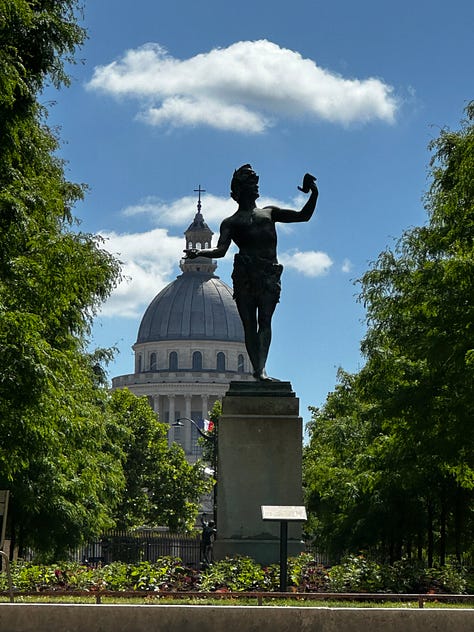
One place I wanted to see and we were lucky to get in, was the Centre Pompidou. They only have two shows open because they will be closing in September for renovations. The show we saw was intense. Black Paris or Paris Noir recorded the impact of “150 artists coming from Africa, the Americas and the Caribbean, whose works have often never been displayed in France before.” The show was definitely comprehensive as it encompasses a wide range of work and artists. It was moving, sometimes dark, sometimes hopeful, but all and all, impactful.

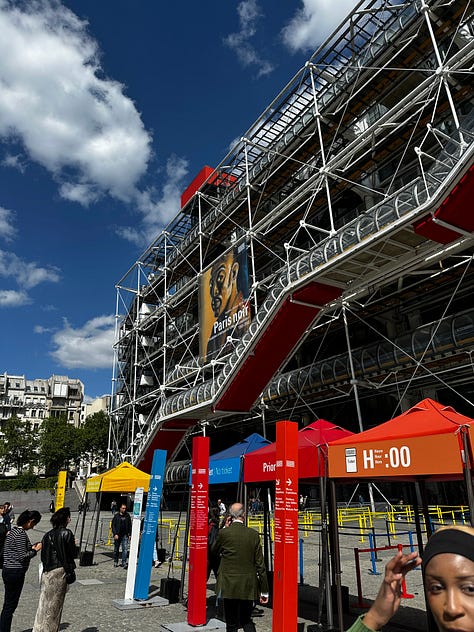
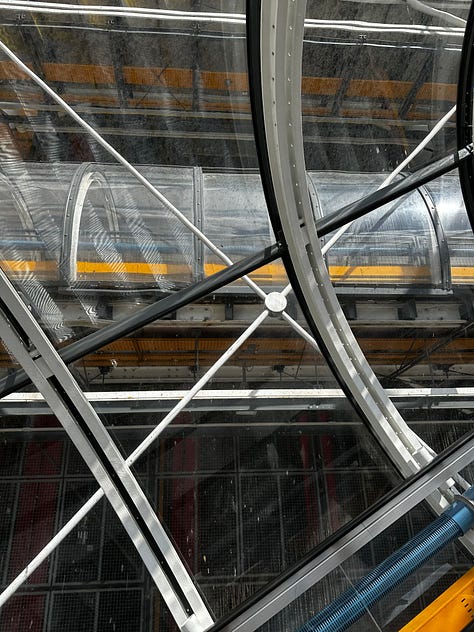





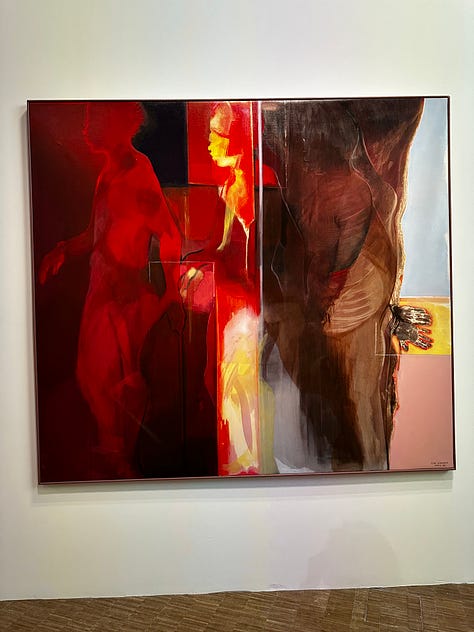
Musée d’Orsay was amazing. A considerable number of work found in the art history books is in this museum. I had a blast as I saw work I had studied in my classes. But it was the Art in the Street show that captured me. There are about 230 artworks in this show exploring the history of the poster in France; how it went from something deplorable to a revered form of public art and political expression. We actually ended up visiting d’Orsay twice which was very opportune for me because the show about the poster started after that short first visit. I spent the entire time in that room taking pictures of every poster, reading every blurb, listening to the audio tour, and just basking in it. Alphonse Mucha’s iconic posters for Sarah Bernhardt were there and oh my, they took my breath away.
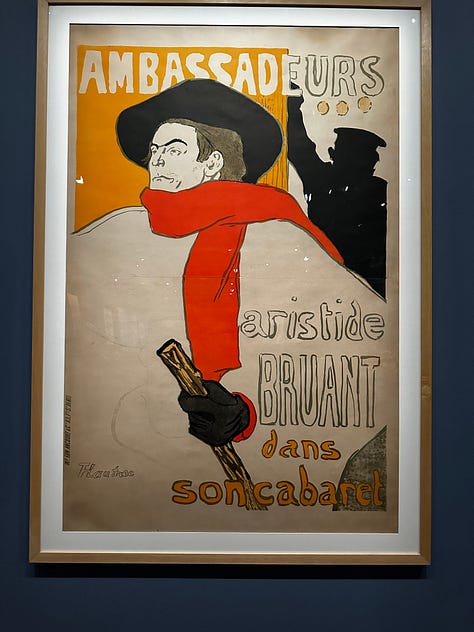
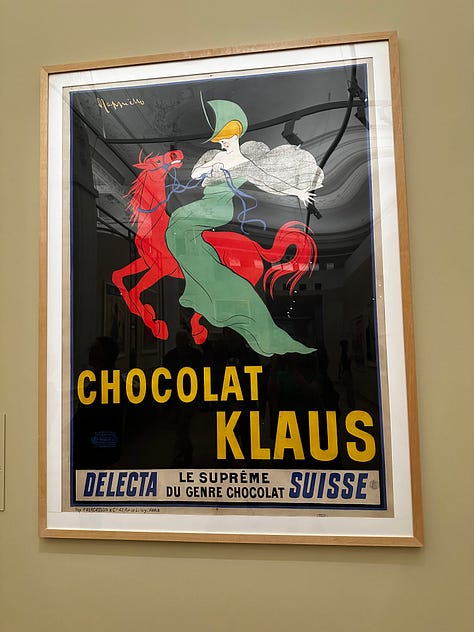


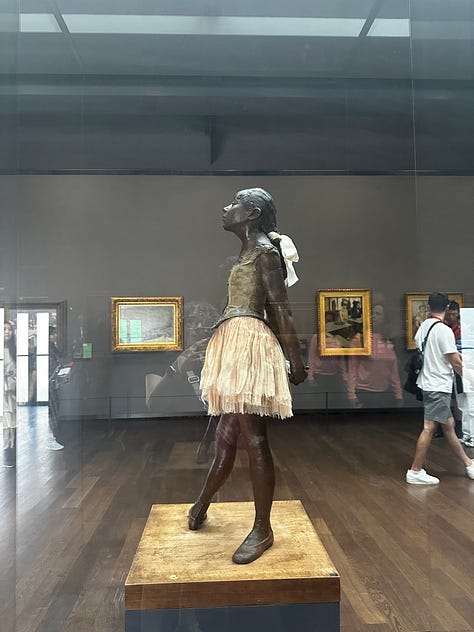
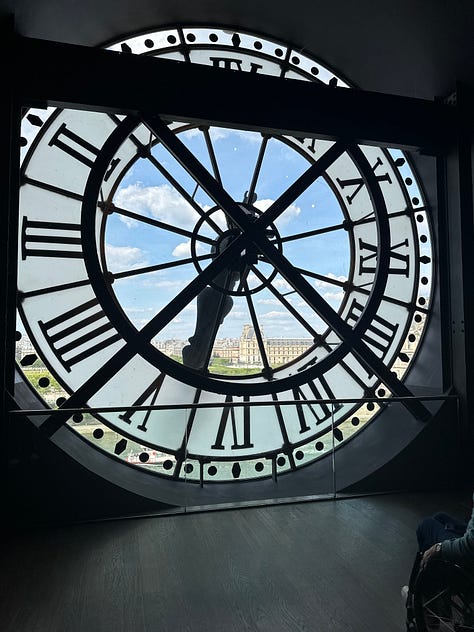

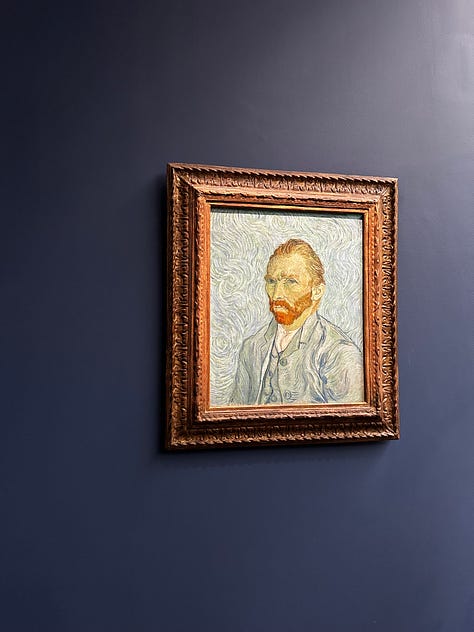

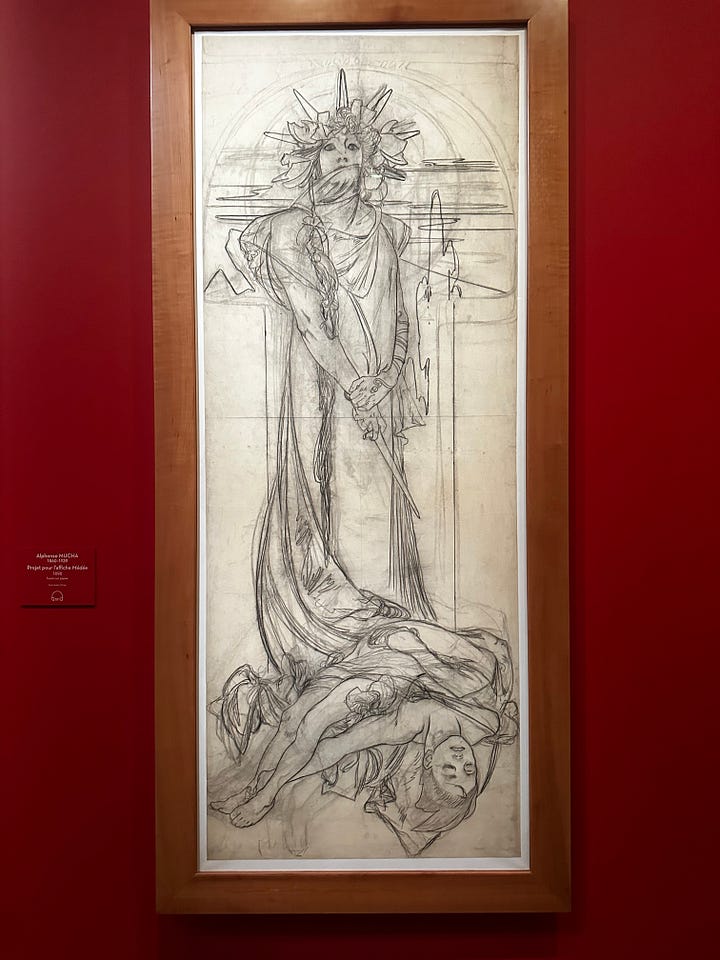


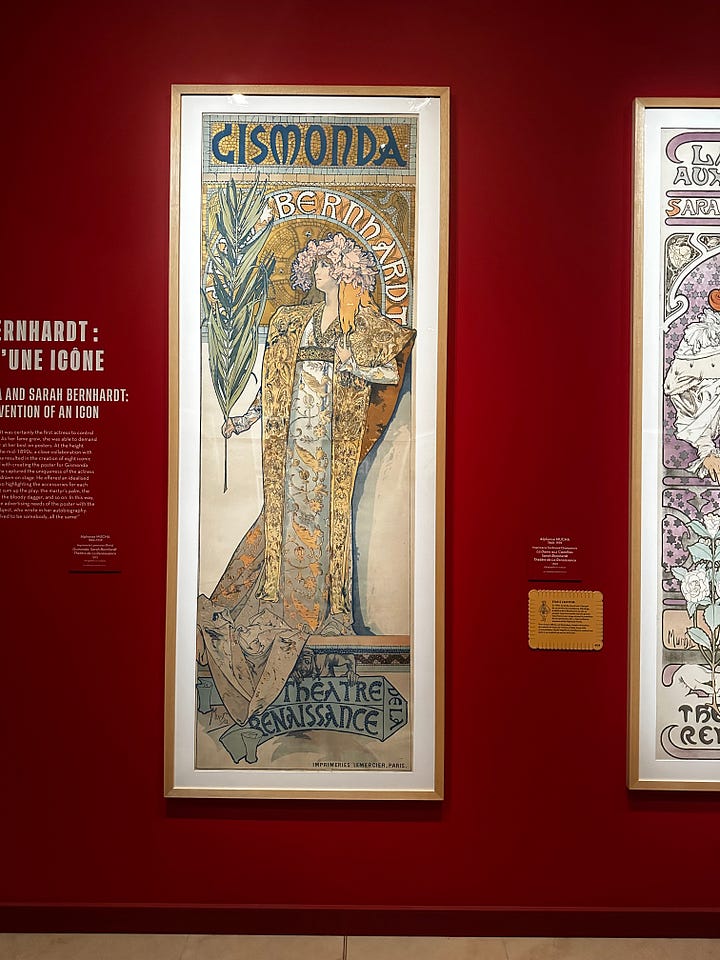
The last museum we visited was the Bourse de Commerce, which is one of three contemporary and emerging art museums that holds the Pinault Collection. The work housed in the Bourse is contemporary and edgy. The building is glorious built on one single column and a large dome on top. Along with work form emerging artists there are several pieces by known artists such as Man Ray and Ana Mendieta.
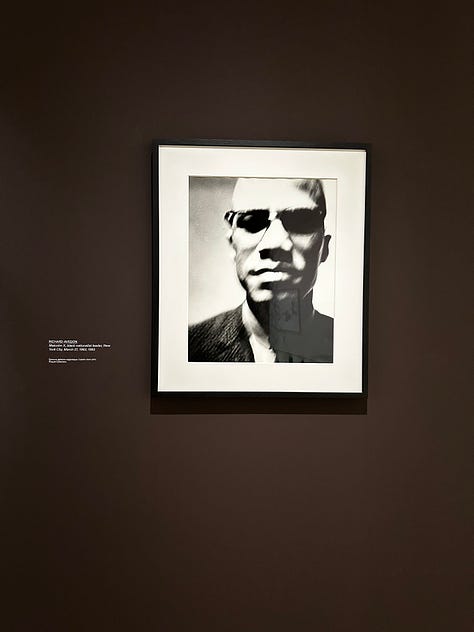
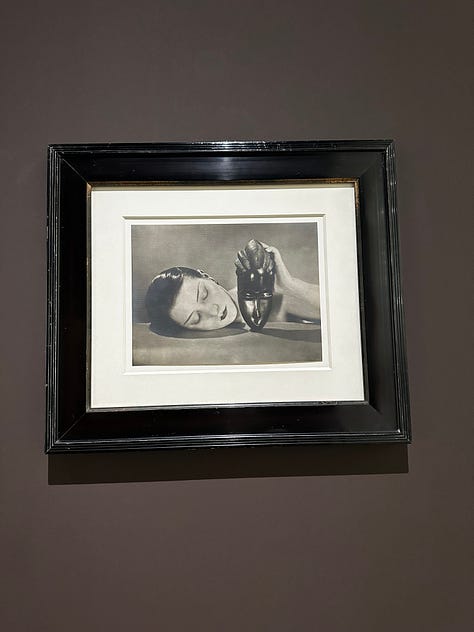
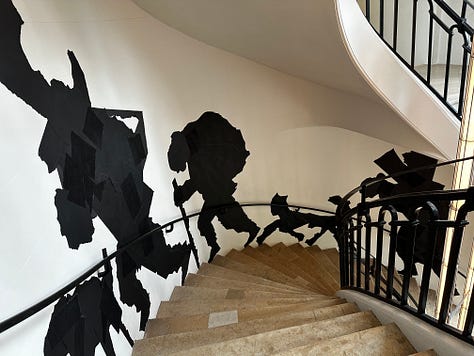


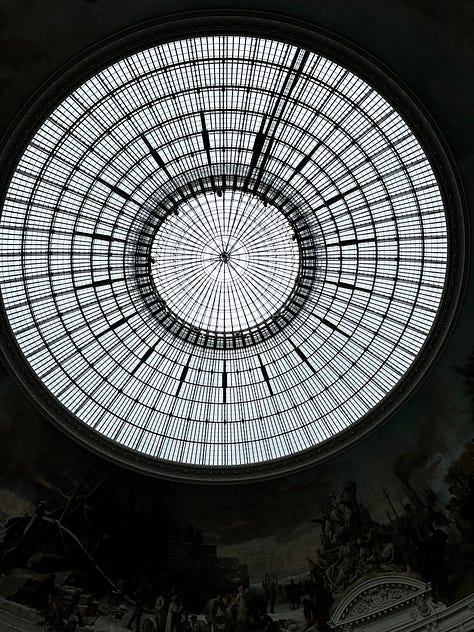


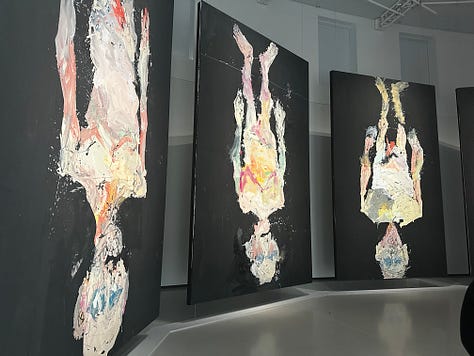
Last but not least, we visited the Champs-Elysées and went up the Arc de Triomphe. We took public transportation to get there but had to walk some. The walk was beautiful, the parks, the sights, and the street that leads to the Champs-Elysées is full of high end stores including the Louis Vuitton store which is designed like a suitcase. We also visited the most famous macaron store in Paris, Laduree. It is a gorgeous store.
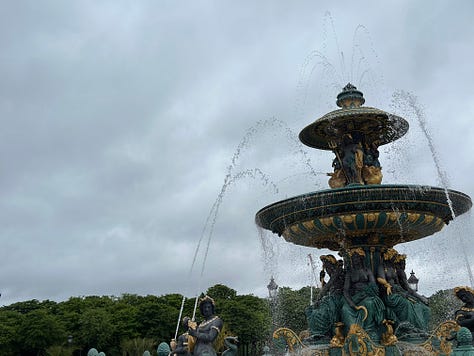

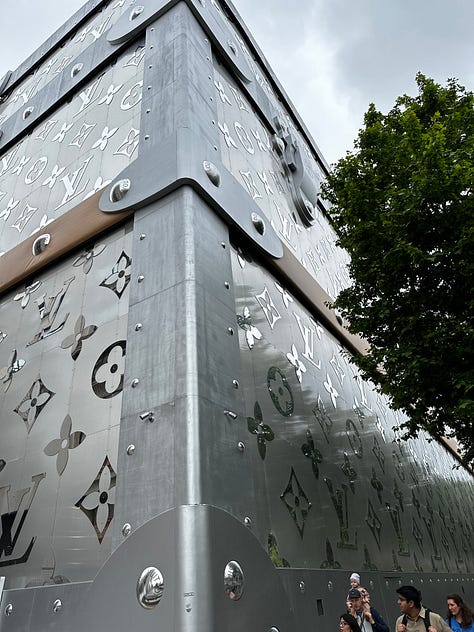
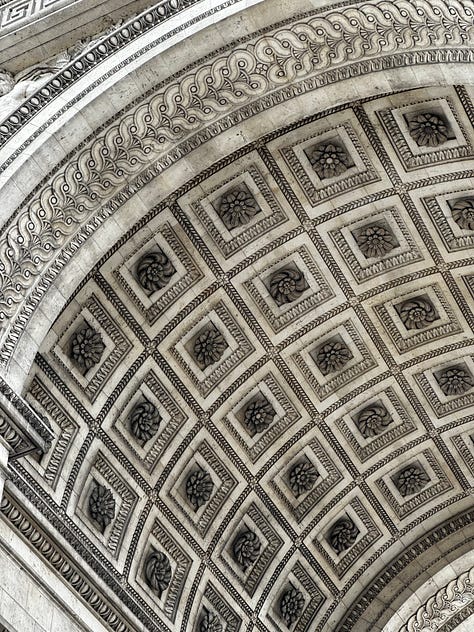
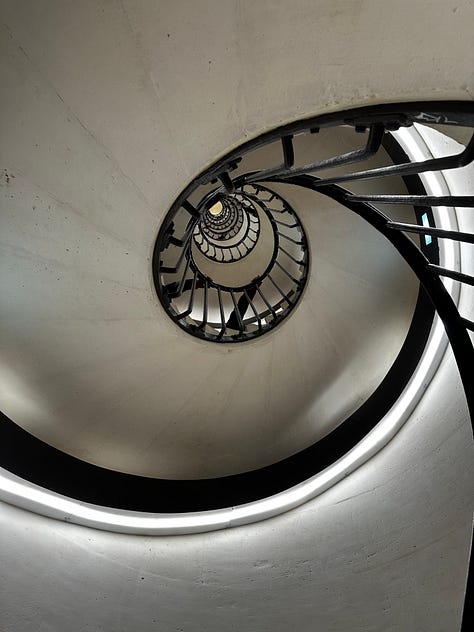
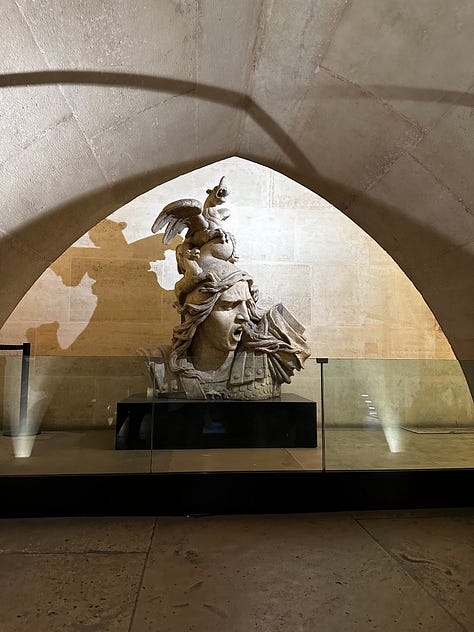
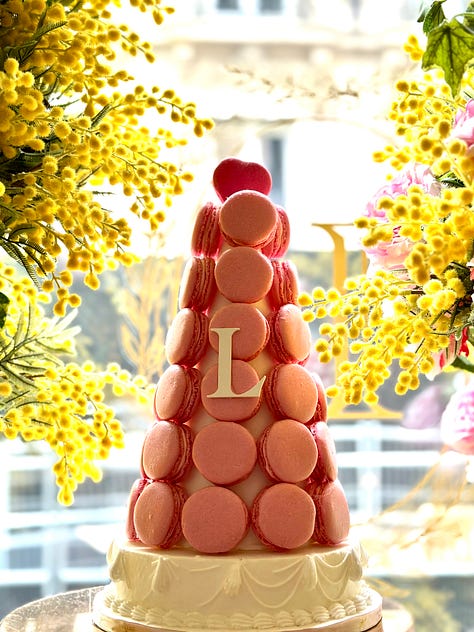
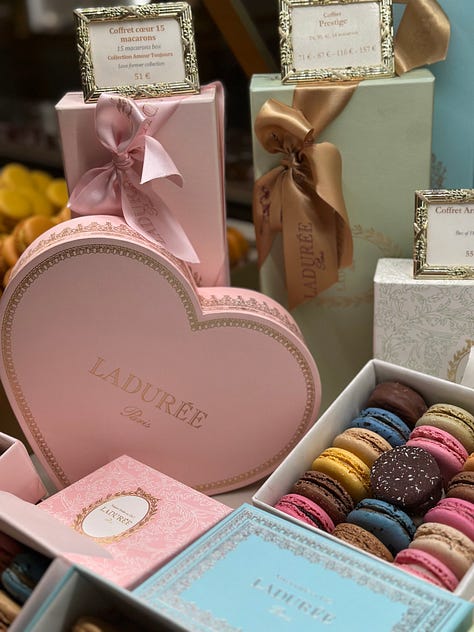

I hope I get the chance to lead another study abroad trip to Paris. We only scratched the surface of the things to see and do. More importantly I hope you did not get tired of reading this long post.
Love,
Alma




